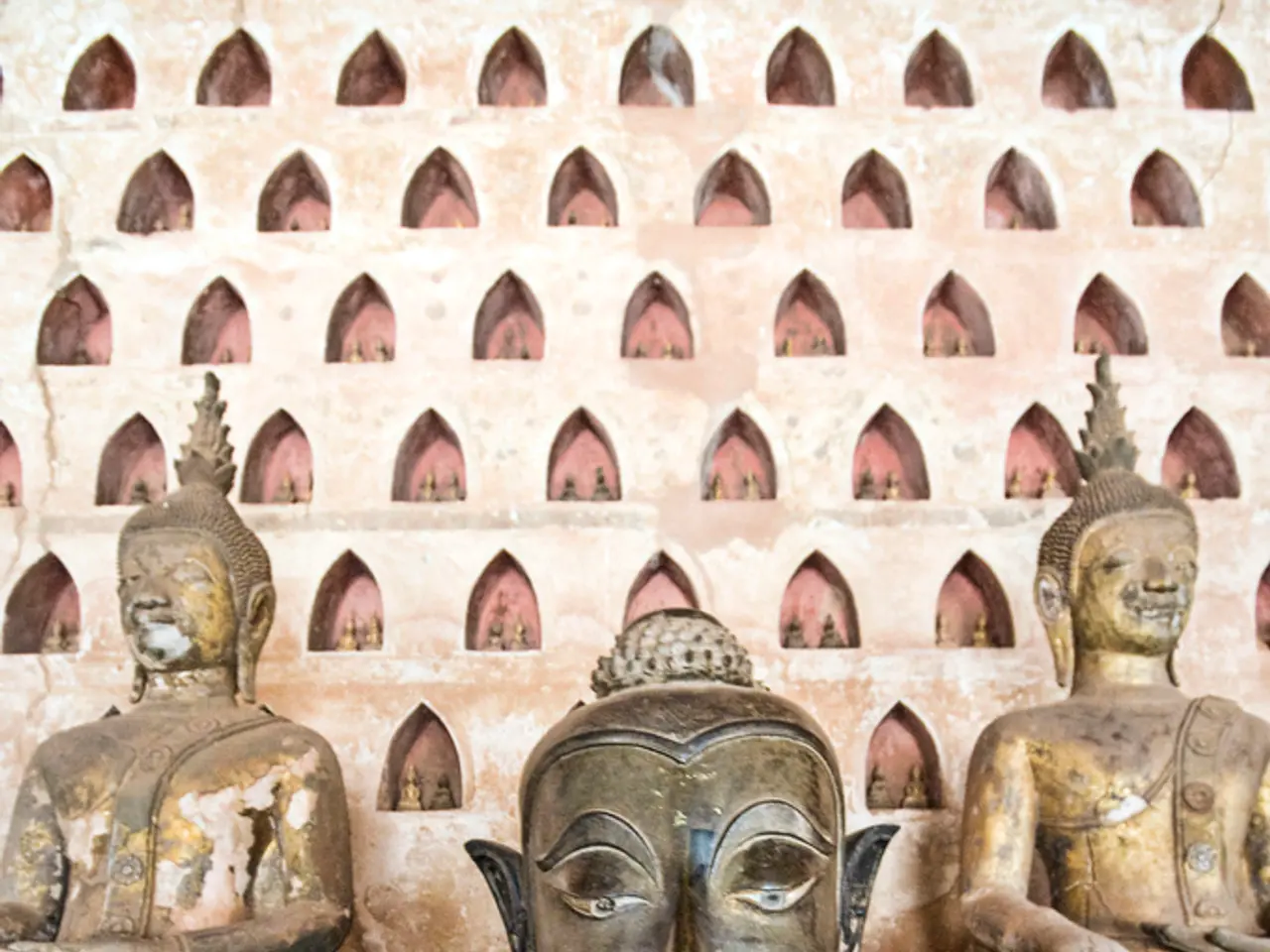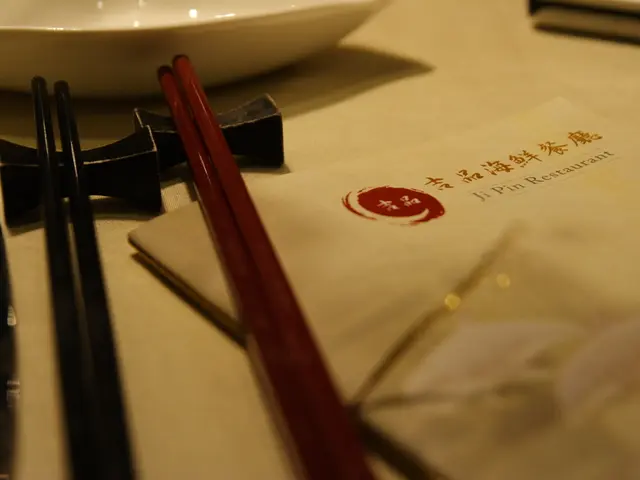Unveiling Japan's Hidden Buddhist Treasures: Secret Statues and their Temples
Discovered: 5 Concealed Buddha Statues in Japan, Known as "Hibutsu"
Ever heard of Hibutsu? These secret Buddhist statues, hidden in some of Japan's temples, are a fascinating sight to behold, albeit rarely showcased to the general public. Let's take a peek at some of the most enchanting Hibutsu one can witness every year!
What exactly is a Hibutsu?
A Hibutsu is a special Buddhist statue that remains hidden within select temples throughout Japan. They are typically reserved for specific ceremonies and opening days. One of the unique traditions associated with these hidden statues can be found in the Gokaicho - an exceptional ceremony that occurs annually or every few years, depending on the temple. During this event, visitors are granted the privilege to glimpse these mystical statues behind miniature shrines (Zushi) located within the temples' main halls.
While the origin and history of Hibutsu may remain a mystery, it is believed that the tradition dates back to the 9th century and links to Shinto religion, which is native to Japan. The concealed nature of the statues is said to have a religious purpose, embodying Gods that are otherwise believed to be intangible and without physical form.
Guze Kanzeon Bosatsu (Horyuji), Nara
Nara, Japan, is home to one of the country's most renowned Buddhist temples - Horyuji. Originally established in 607 by Empress Suiko and Prince Shotoku, the temple contains a remarkable hidden statue known as Guze Kanzeon Bosatsu. This 7th-century wooden statue is believed to resemble Prince Shotoku. Despite being kept hidden for over 200 years during the Edo period, it is now shown to the public on two occasions each year, from April 11th to May 5th, and from October 22nd to November 22nd.
Juichimen Kannon Ryuzo (Hokkeji), Nara
In Nara, another significant temple called Hokkeji homes the Juichimen Kannon Ryuzo statue. This Hibutsu has a unique likeness to Empress Komyo, who founded the temple in 745. The enchanting figure of the statue and its sacred ambiance showcase the beauty of Empress Komyo in ancient times. The statue is opened to the public for limited periods in the spring and fall.
Mujakubosatsu Ryuzo (Kofukuji), Nara
A short walk from JR Nara Station, Kofukuji attracts numerous travelers to its historic sites. A national headquarters of Hosso Sect, it includes a pair of wooden statues - Mujakubosatsu Ryuzo - created during the Kamakura period by famous sculptor, Unkei. These detailed and lifelike statues are displayed to the public just twice a year during the spring and fall.
Nyoirin Kannon Zazou (Kanshinji), Osaka
Kanshinji in Osaka is home to the majestic Nyoirin Kannon Zazou statue, dating back to the 9th century. This beautifully preserved wooden statue has an intricate design and vibrant colors, offering an exceptional glimpse into ancient Japanese artistry. It is opened to the public for only two days, from April 17th to 18th every year.
Juichimen Kannon Ryuzo (Mieji), Gifu
This historic temple in Gifu houses the oldest Buddha statue in the prefecture, which is the Juichimen Kannon Ryuzo statue. Designated as an Important Cultural Property, the statue's unique feature is a traditional Japanese carving technique known as "Datsukansitsu," traditionally found in the Kansai region but rare in the Chubu area. The statue is exhibited to the public once a year, on April 18th.
So there you have it! These lovely Hibutsu statues provide a unique glimpse into Japan's rich history, combining spirituality and artistic expression. It's essential to plan your trip according to the specific opening times for these secret statues to make the most of your Japanese adventure!
- Incorporating the Hibutsu statues into your itinerary will offer a captivating blend of history, art, and spirituality as you traverse Japan's temples.
- As you explore the enchanting experiences provided by these hidden Buddhist statues, remember to also enjoy the unique food and local lifestyles each destination has to offer.
- Places to visit in Nara include the renowned Horyuji Temple, home to the remarkable Guze Kanzeon Bosatsu, hidden for centuries yet revealed to the public twice yearly.
- While in Nara, make sure to also visit Hokkeji to witness the unique likeness of Empress Komyo in the temple's Juichimen Kannon Ryuzo statue.
- On your travels, don't forget to set aside time to visit Kanshinji in Osaka, where the majestic Nyoirin Kannon Zazou statue will provide an exceptional glimpse into ancient Japanese artistry, open to the public only on specific dates each year.





